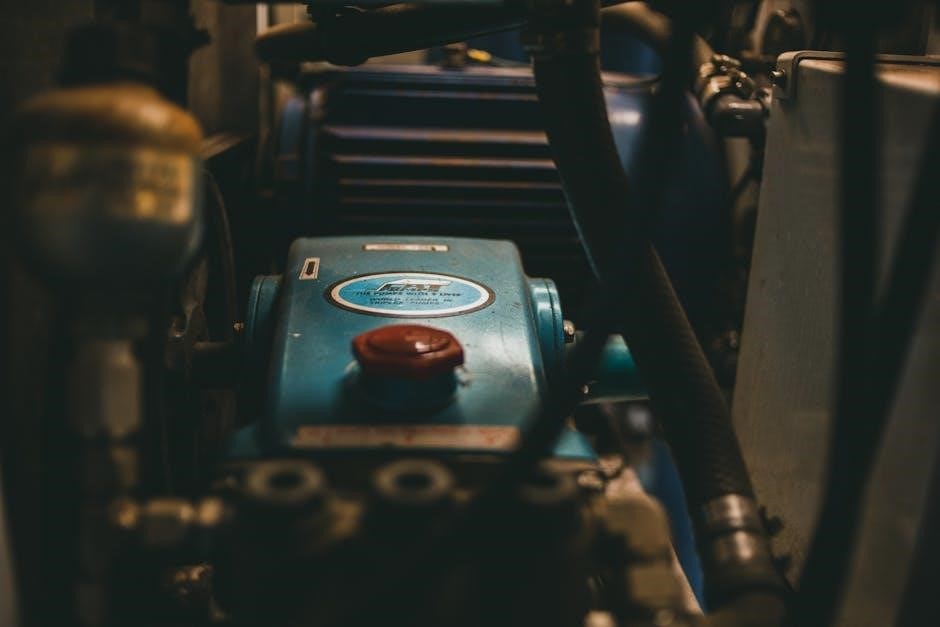The Autococker Valve Guide and New Valve are pivotal components, each offering unique benefits. This section introduces their roles, highlighting improvements and setting the stage for comparison.
Overview of Autococker Components
The Autococker is a mechanically operated paintball marker featuring a robust design with interchangeable components. Key elements include the valve guide, valve, solenoid, regulator, and hammer. These parts work in harmony to regulate airflow, control pressure, and cycle the marker efficiently. The valve guide ensures smooth operation, while the valve manages air flow directly. Upgrades like the new valve aim to enhance performance, offering improved airflow and consistency. Understanding these components is essential for optimizing the Autococker’s functionality and achieving peak performance on the field.
Importance of Valve Systems in Autococker Performance
The valve system is a critical component of the Autococker, directly influencing its performance, efficiency, and consistency. It regulates airflow and manages pressure, ensuring smooth operation during firing. The valve guide and valve work together to optimize air delivery, minimizing waste and maintaining reliable cycling. Upgrades to this system, such as the new valve, aim to enhance airflow and pressure handling, which are vital for achieving consistent velocity and accuracy. A well-performing valve system is essential for competitive play and overall marker reliability.
Objective of the Comparison
This comparison aims to evaluate the Autococker Valve Guide and the New Valve, focusing on their design, functionality, and performance. By analyzing key differences, such as airflow efficiency, pressure handling, and material quality, this guide helps players understand which upgrade best suits their needs. The objective is to provide a clear, unbiased overview, enabling informed decisions for optimizing marker performance, whether through maintaining the stock valve guide or upgrading to the new valve for enhanced capabilities.

Understanding the Autococker Valve Guide
The Autococker Valve Guide is a critical component designed to regulate airflow and ensure smooth operation. It plays a key role in maintaining efficiency and performance.
Definition and Function of the Valve Guide
The Autococker Valve Guide is a component that directs airflow and ensures the valve operates smoothly. It is designed to maintain consistent pressure and airflow, preventing leaks and inefficiencies. Its primary function is to guide the valve’s movement, ensuring proper sealing and optimal performance. By stabilizing the valve, it enhances the marker’s reliability and consistency during firing. This component is essential for maintaining the overall efficiency and effectiveness of the Autococker system.
Design and Construction of the Valve Guide
The Autococker Valve Guide is crafted with precision to ensure smooth operation. Typically made from durable materials like aluminum or bronze, it features a sleek design that minimizes friction and wear. The guide is machined to tight tolerances, ensuring proper alignment and movement of the valve. Its construction focuses on longevity and reliability, making it a critical component for maintaining consistent airflow and performance.
Some designs incorporate additional features, such as polished surfaces or strategic porting, to enhance efficiency. These details contribute to better sealing and reduced air leakage, ultimately improving the marker’s overall functionality. The valve guide’s robust construction ensures it withstands the rigors of frequent use, making it a dependable part of the Autococker system.
Role of the Valve Guide in Airflow and Efficiency
The valve guide plays a crucial role in optimizing airflow and efficiency within the Autococker. By ensuring proper alignment and smooth movement of the valve, it minimizes turbulence and maximizes airflow, which directly impacts the marker’s performance. A well-designed guide helps maintain consistent pressure and flow rates, reducing energy loss and enhancing overall operational efficiency.
Its role in sealing and directing air flow ensures that the valve operates smoothly, preventing leaks and misfires. This contributes to consistent firing cycles and improved accuracy, making the valve guide an essential component for maintaining peak performance in the Autococker system.
Common Materials Used for Valve Guides
Valve guides are typically constructed from durable materials such as aluminum, stainless steel, or bronze. Aluminum offers lightweight construction and good thermal conductivity, while stainless steel provides superior corrosion resistance. Bronze is often used for its excellent wear resistance and ability to reduce friction. These materials are chosen for their ability to withstand the mechanical stresses and maintain precise alignment, ensuring optimal airflow and longevity of the valve guide.
The choice of material directly impacts the valve guide’s performance, with each offering unique benefits tailored to specific operating conditions.

Exploring the New Valve
The new valve introduces enhanced airflow dynamics, improved pressure handling, and a refined design, offering better efficiency and performance compared to the traditional valve guide system.
The new valve design represents a significant upgrade, focusing on improved airflow and efficiency. It features a larger diameter in the upper tube, enhancing performance and consistency. Designed to handle lower operating pressures, it accommodates higher airflow demands, making it ideal for modern Autococker setups. The new valve’s construction prioritizes durability and precision, addressing the limitations of the stock valve. Its refined engineering aims to deliver smoother operation, reduced wear, and enhanced reliability, appealing to players seeking upgraded performance without compromising compatibility.
Key Features and Improvements Over the Stock Valve
The new valve boasts a refined design with enhanced airflow capabilities, reducing pressure drop and improving marker efficiency. Its larger internal diameter allows for higher flow rates, addressing the stock valve’s limitations. Additionally, the new valve features improved sealing technology, minimizing leaks and ensuring consistent performance. The stem design has been optimized for durability, reducing wear and tear. These upgrades collectively result in smoother operation, increased reliability, and better overall performance compared to the stock valve, making it a desirable upgrade for players seeking enhanced functionality.
Material and Manufacturing Differences
The valve guide is typically crafted from bronze, known for its durability and resistance to wear. The new valve, however, is made from high-performance alloys, offering enhanced strength-to-weight ratios and corrosion resistance. Manufacturing differences are notable, with the new valve utilizing advanced CNC machining for tighter tolerances and smoother surfaces. This process enhances airflow and ensures consistent performance. While the valve guide may undergo additional machining steps to ensure precise fitment and optimal airflow. These manufacturing advancements contribute to the new valve’s improved efficiency and reliability in high-performance scenarios.
Performance Enhancements of the New Valve
The new valve offers significant performance improvements, including a 10-20 FPS increase over the stock valve. It achieves this through enhanced airflow and efficiency, particularly at lower operating pressures. The new design allows for better pressure handling, ensuring consistent performance even with high-flow setups. Additionally, the new valve reduces turbulence and noise, resulting in a smoother operation and a distinct sound signature. These improvements contribute to a more reliable and consistent shooting experience, making the new valve a valuable upgrade for players seeking improved accuracy and marker performance.
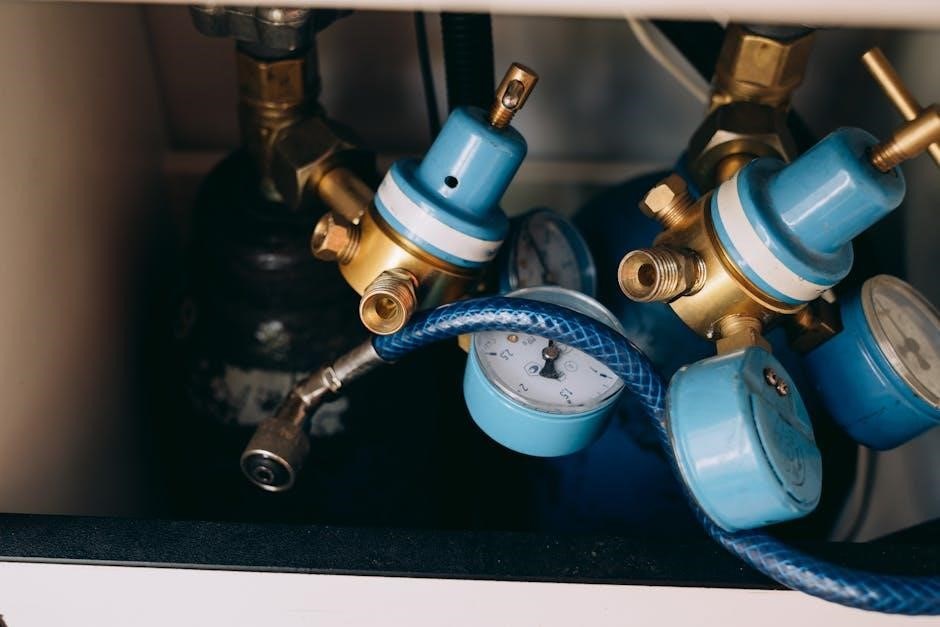
Comparing Design and Functionality
Comparing design and functionality, the new valve enhances airflow and handles pressure more efficiently, while the valve guide ensures smooth operation and consistency in marker performance with significantly reduced turbulence and noise.
Design Differences Between Valve Guide and New Valve
The valve guide features a sleek, cylindrical design with minimal ports, focusing on guiding airflow smoothly. In contrast, the new valve incorporates advanced porting and a more aerodynamic shape, improving air efficiency. The new valve also includes a removable stem tip for easier maintenance, while the valve guide relies on its fixed structure for stability. These design differences aim to optimize performance, with the new valve offering enhanced flow and adaptability compared to the traditional guide.
Functional Improvements in the New Valve
The new valve offers enhanced airflow dynamics, allowing for higher flow rates and improved pressure handling. It operates efficiently at lower pressures, reducing wear on the marker while maintaining consistent performance. The new design minimizes turbulence, ensuring smoother air delivery and better overall efficiency. Additionally, the new valve incorporates features that reduce mechanical stress, leading to improved reliability and longer lifespan compared to the traditional valve guide.
Impact on Airflow and Pressure Handling
The new valve significantly enhances airflow efficiency by reducing turbulence and optimizing air delivery pathways. This results in smoother operation and consistent pressure management. Compared to the valve guide, the new valve handles lower operating pressures more effectively, ensuring better performance without compromising reliability.
The valve guide, while functional, may restrict airflow slightly due to its design, potentially affecting overall efficiency at higher pressure settings. The new valve’s improved pressure handling capabilities make it a superior choice for maintaining marker consistency and accuracy during gameplay.
Compatibility with Autococker Mechanisms
The Autococker valve guide and new valve are both designed to integrate seamlessly with the marker’s existing mechanisms. However, the new valve offers enhanced compatibility due to its improved design, which minimizes the need for additional adjustments. The valve guide, while functional, may require slight modifications to ensure optimal performance with certain components. Proper installation is crucial to avoid issues like leaks or misalignment, ensuring both parts work efficiently within the Autococker system.

Performance Metrics and Efficiency
Evaluating performance metrics and efficiency, the Autococker valve guide and new valve differ in airflow and pressure handling. The new valve enhances flow rates and maintains consistent pressure, improving overall marker performance. Its design reduces energy loss, ensuring efficient air utilization. In contrast, the valve guide, while reliable, may have slightly lower flow rates. Both components aim to optimize accuracy and reliability, but the new valve excels in delivering smoother, more consistent operation under varying conditions.
Flow Rate and Efficiency of the Valve Guide
The valve guide in an Autococker is designed to optimize airflow and efficiency. It ensures smooth air passage, reducing turbulence and energy loss. While it provides consistent performance, its flow rate is slightly lower compared to newer designs. The guide’s efficiency is crucial for maintaining reliable operation, especially at higher pressures. However, advancements in valve technology have led to improved flow rates in newer models, making the valve guide a solid choice for those seeking dependable, albeit not peak, performance;
Pressure Handling Capabilities of the New Valve
The new valve excels in handling higher operating pressures, ensuring consistent performance even under demanding conditions. Its enhanced design and materials allow for better pressure regulation, reducing the risk of leaks or inefficiencies. This improvement enables smoother airflow and more reliable marker operation. The new valve’s ability to manage increased pressure without compromising performance makes it a significant upgrade, particularly for players seeking enhanced reliability and consistency in their Autococker setup.
Comparison of Operating Pressures
The new valve operates effectively at lower pressures compared to the stock valve guide, enhancing efficiency and reducing wear on internal components. It handles higher pressure demands without sacrificing performance, making it more versatile for various setups. In contrast, the valve guide is optimized for stock configurations, struggling with higher flow rates at lower pressures. This comparison highlights the new valve’s superiority in adapting to modern high-performance requirements, offering a broader range of operational flexibility for players seeking reliability and consistency in their Autococker.
Impact on Marker Consistency and Accuracy
The new valve significantly enhances marker consistency and accuracy by providing smoother airflow and more precise control. It reduces pressure fluctuations, ensuring consistent shot-to-shot performance. In contrast, the stock valve guide may lead to minor inconsistencies, especially at lower operating pressures. The new valve’s improved sealing and airflow design minimizes variability, resulting in more accurate shots. This makes it a superior choice for players seeking reliable performance in competitive scenarios, as it directly impacts the marker’s ability to deliver consistent and precise results.
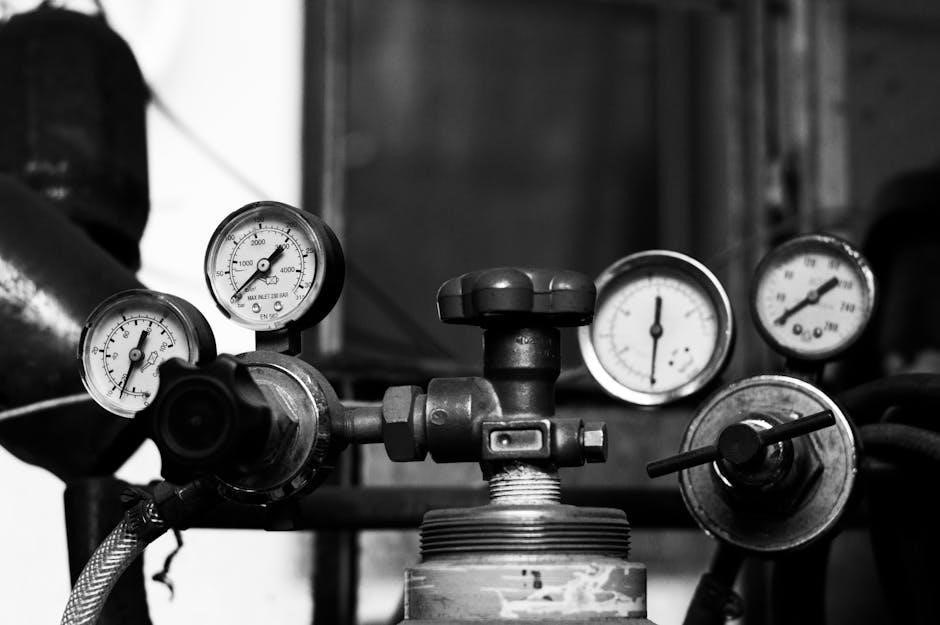
Installation and Maintenance
Installing the valve guide and new valve requires precise alignment and sealing. Regular maintenance, including cleaning and inspecting for wear, ensures optimal performance and longevity.
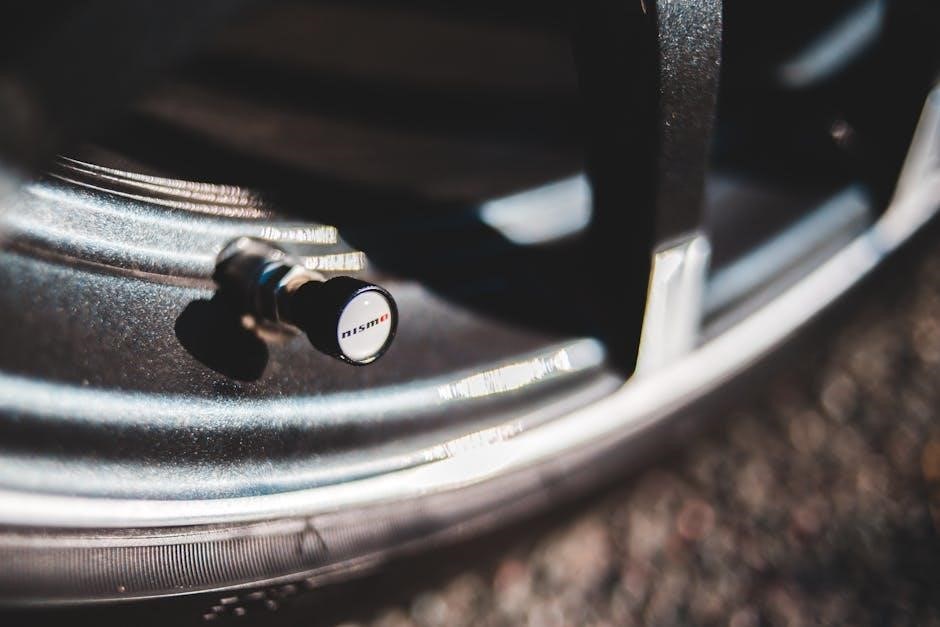
Installation Process for the Valve Guide
The valve guide installation involves aligning it with the marker’s body and ensuring proper seating. Apply a small amount of lubricant to prevent friction and wear. Secure it firmly using the provided hardware, following the manufacturer’s torque specifications. After installation, test the marker to ensure smooth airflow and functionality. Regular inspections are recommended to maintain performance and prevent potential issues. This process is straightforward but requires attention to detail for optimal results.
Installation Steps for the New Valve
Installing the new valve requires careful disassembly of the marker. Begin by removing the existing valve and ensuring the area is clean. Align the new valve with the marker’s body, ensuring proper seating and alignment. Secure it using the recommended hardware, following torque specifications. Reassemble the marker and test for leaks by firing a few shots. Adjustments may be needed for optimal performance. Always refer to the manufacturer’s instructions for specific details, as improper installation can lead to reduced efficiency or damage to the marker.
Maintenance Requirements for Optimal Performance
Regular maintenance is crucial for both the valve guide and new valve. Clean the components thoroughly after use to prevent dirt buildup. Inspect the valve guide for wear and tear, replacing it if necessary. For the new valve, ensure proper alignment during installation to avoid leaks. Lubricate moving parts periodically to maintain smooth operation. Check for any signs of damage or corrosion, addressing issues promptly. Proper care extends the lifespan and ensures consistent performance, keeping your Autococker functioning at its best.
Troubleshooting Common Issues
Common issues with the valve guide and new valve include air leaks, inconsistent performance, and recocking problems. Check the valve installation for proper alignment and ensure no debris obstructs airflow. Inspect the valve guide for wear or damage, replacing it if necessary. For the new valve, verify solenoid function and wire connections. If the gun fails to recock, examine the trigger mechanism and spring tension. Addressing these issues promptly ensures optimal performance and prevents further complications down the line.
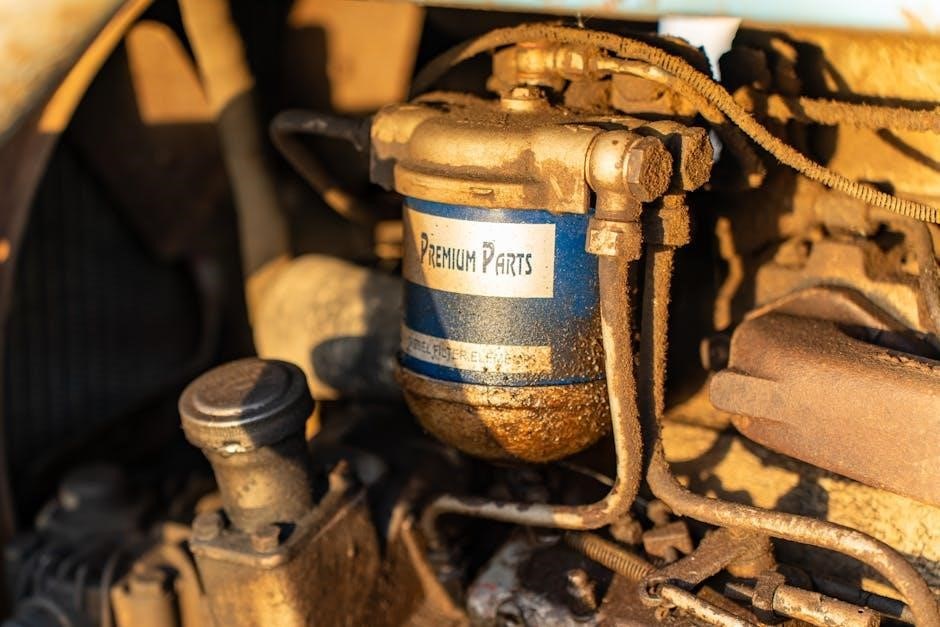
Cost and Value
The Autococker Valve Guide and New Valve differ in price, with the New Valve often being more expensive due to its advanced design and materials. However, the New Valve offers improved performance and durability, potentially saving money in the long run by reducing maintenance needs. The Valve Guide, while cost-effective, may require more frequent replacements. Both options provide value, but the New Valve stands out for its enhanced functionality and reliability, making it a worthwhile investment for serious players seeking optimal performance.
Price Comparison Between Valve Guide and New Valve
The Autococker Valve Guide is generally more affordable, priced between $20 to $40, making it a budget-friendly option for players. In contrast, the New Valve typically ranges from $50 to $80, reflecting its advanced design and materials. While the Valve Guide offers cost savings upfront, the New Valve’s durability and performance may reduce long-term expenses. Players on a tight budget often opt for the Valve Guide, while those seeking enhanced reliability prefer the New Valve, balancing initial cost with potential savings over time.
Value for Money in the Long Run
The New Valve often provides better long-term value due to its enhanced durability and lower maintenance requirements. While it may cost more initially, its improved materials and design reduce the need for frequent replacements. The Valve Guide, being more affordable upfront, may require more frequent upgrades, potentially offsetting its initial savings. For players seeking a reliable, high-performance option, the New Valve’s longevity and consistent performance justify its higher cost. Ultimately, the choice depends on balancing immediate savings against long-term benefits.
Return on Investment for Upgrades
Upgrading to the New Valve typically offers a higher return on investment due to its enhanced performance and durability. While the initial cost is higher, its improved airflow, consistency, and reduced maintenance needs often justify the expense over time. The Valve Guide, while more affordable, may require more frequent replacements, potentially offsetting its lower upfront cost; For serious players seeking long-term reliability and performance, the New Valve provides better value, making it a worthwhile investment for those committed to optimizing their Autococker’s efficiency and accuracy.
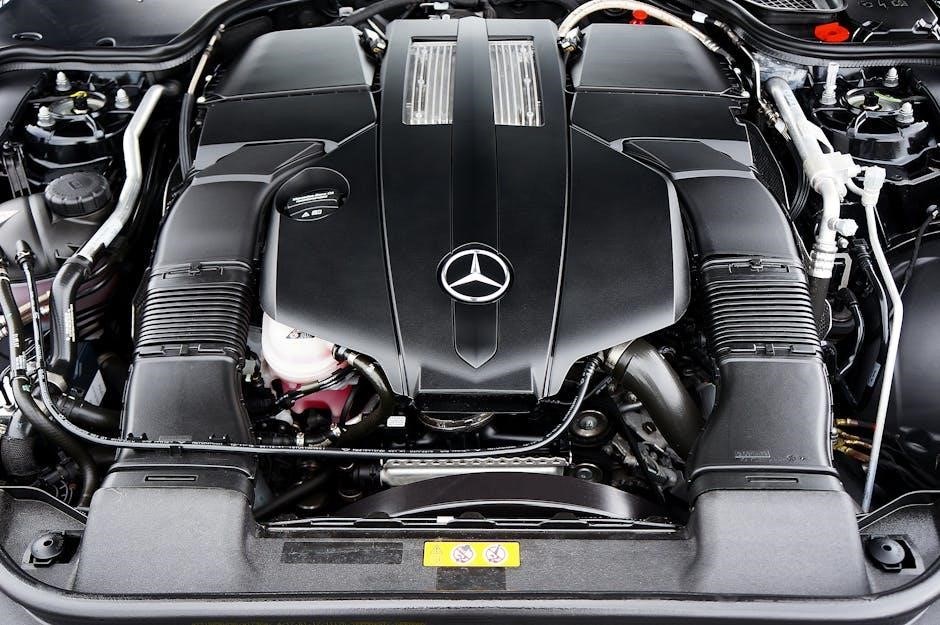
User Reviews and Feedback
Players report improved performance with the New Valve, citing smoother operation and reduced maintenance. The Valve Guide receives mixed reviews, with some praising its cost-effectiveness while others note reliability issues. Community recommendations often favor the New Valve for its enhanced durability and consistency, making it a preferred choice among experienced users seeking long-term performance improvements.
Player Experiences with the Valve Guide
Players have shared mixed experiences with the Valve Guide, noting improved airflow in some cases but also reporting occasional maintenance challenges. Some users highlight its reliability for stock setups, while others mention slight issues with guide rod smoothness and pumping efficiency. Overall, the Valve Guide remains a solid choice for those seeking incremental upgrades without major overhauls.
Player Experiences with the New Valve
Players praise the New Valve for its significant performance boost, particularly in lower operating pressures and smoother operation. Many report a noticeable increase in FPS, enhanced consistency, and reduced noise. However, some note the need for compatible components, such as solenoid manifolds, to fully leverage its features. Overall, the New Valve is lauded as a worthwhile upgrade for those seeking improved efficiency and reliability in their Autocockers.
Community Recommendations and Preferences
The paintball community often debates the merits of the Valve Guide and New Valve, with many favoring the New Valve for its enhanced performance and efficiency. Players highlight its improved airflow and pressure handling, making it a top choice for competitive play. However, some prefer the simplicity and reliability of the Valve Guide for casual use. Experts recommend upgrading to the New Valve for optimal results, especially in modern setups, due to its compatibility with current components and superior overall performance.
Expert Opinions on the Upgrades
Experts widely agree that the New Valve offers superior performance and efficiency compared to the traditional Valve Guide. They emphasize its improved airflow and pressure handling, making it ideal for competitive play. The New Valve’s enhanced design reduces wear and tear, providing smoother operation and better reliability. Many technicians recommend upgrading to the New Valve for optimal results, especially for players seeking consistency and accuracy. Despite the higher cost, experts consider it a worthwhile investment for serious enthusiasts looking to elevate their Autococker’s performance.
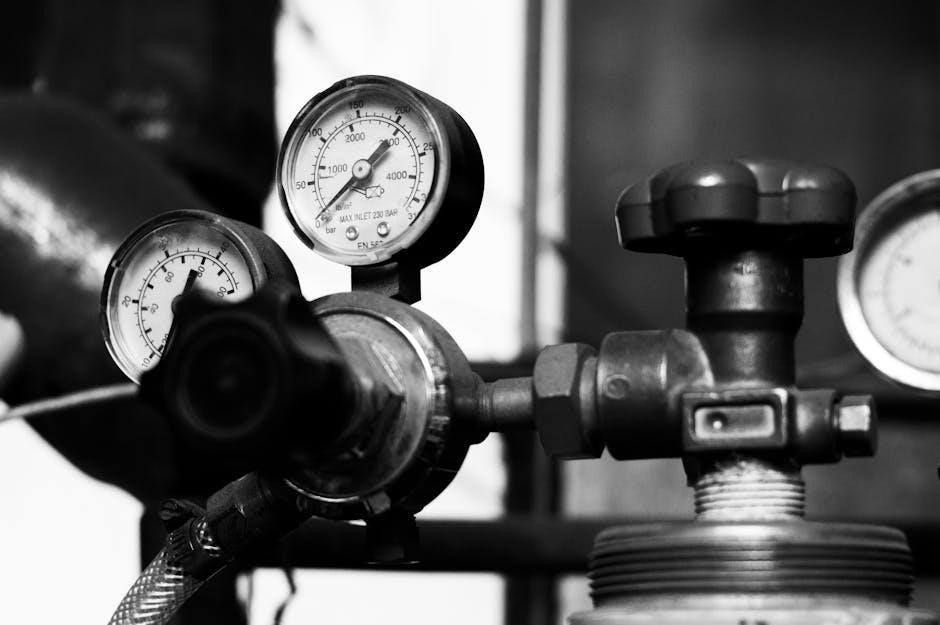
Pros and Cons
The Autococker Valve Guide and New Valve each have distinct advantages and drawbacks. This section evaluates their strengths and weaknesses, helping users make informed decisions.
Advantages of the Valve Guide
The Valve Guide offers enhanced stability and alignment, reducing wobble and improving overall performance. Its durable design, often made from materials like bronze, ensures longevity and resistance to wear. The guide’s structure minimizes airflow restrictions, promoting efficiency and consistent operation. It also maintains compatibility with existing Autococker mechanisms, making it a cost-effective solution. Players appreciate its reliability and minimal maintenance requirements, making it a practical choice for those seeking steady performance without major upgrades.
Disadvantages of the Valve Guide
The Valve Guide has limitations in airflow efficiency, particularly at lower operating pressures, which can restrict performance. Its design may require more precise installation to avoid misalignment, potentially causing leaks or inconsistent operation. Additionally, it lacks the advanced features of newer valves, such as improved materials or flow dynamics, making it less optimal for high-performance setups. While durable, it may not accommodate the higher airflow demands of modified or upgraded markers, limiting its versatility for advanced users seeking enhanced capabilities.
Advantages of the New Valve
The New Valve offers enhanced airflow and efficiency, particularly at lower operating pressures, making it ideal for high-performance setups. Its improved design reduces wear and tear, ensuring smoother operation and consistency. Advanced materials and manufacturing provide better durability and resistance to leaks. The New Valve also supports higher airflow demands, making it suitable for upgraded markers. Its compatibility with modern Autococker mechanisms ensures seamless integration, while its design reduces the risk of misalignment, offering a reliable upgrade for players seeking improved performance and reliability in their markers.
Disadvantages of the New Valve
The New Valve may have a weaker stem compared to the stock valve, potentially leading to durability issues under extreme conditions. Its higher cost can be a barrier for some players. Additionally, the New Valve may require specific compatibility with other components, limiting its use with older or non-upgraded markers. Some users have reported challenges during installation, which can be frustrating for those less experienced. Despite its improvements, these factors make it less accessible for casual players or those on a budget seeking straightforward upgrades.
The Autococker Valve Guide and New Valve each offer unique benefits. The New Valve excels in performance and efficiency, while the Valve Guide provides cost-effective reliability. Choose based on your priority: performance or affordability.
Final Thoughts on the Valve Guide vs New Valve
The Valve Guide and New Valve cater to different needs. The Valve Guide is ideal for users seeking a reliable, cost-effective solution without compromising performance. In contrast, the New Valve offers enhanced airflow, efficiency, and durability, making it suitable for competitive players or those seeking optimal performance. Players with lower operating pressures may find the New Valve more beneficial, while those prioritizing affordability can rely on the Valve Guide. Both options ensure consistent marker function, aligning with user preferences and gameplay demands.
Recommendation Based on Performance and Cost
For players prioritizing performance, the New Valve is recommended due to its enhanced airflow, efficiency, and durability, making it ideal for competitive play. Its improved design handles lower operating pressures effectively, ensuring consistent and reliable operation. However, for those on a budget or seeking a cost-effective solution without compromising functionality, the Valve Guide remains a reliable choice. Balancing performance and cost, the New Valve offers long-term value for serious players, while the Valve Guide provides affordability for casual use, ensuring both options meet distinct user needs and preferences.
Future Trends in Autococker Upgrades
Future Autococker upgrades are expected to focus on lightweight, high-performance materials and modular designs. Advances in 3D printing may enable custom valve systems with tailored airflow characteristics. Integration of electronic controls and adjustable pressure settings could become standard, offering precise tuning capabilities. Additionally, manufacturers may prioritize compatibility with eco-friendly propellants and energy-efficient mechanisms. As the sport evolves, upgrades will likely emphasize durability, consistency, and adaptability to meet the demands of competitive players while maintaining the classic mechanical feel of the Autococker platform.
